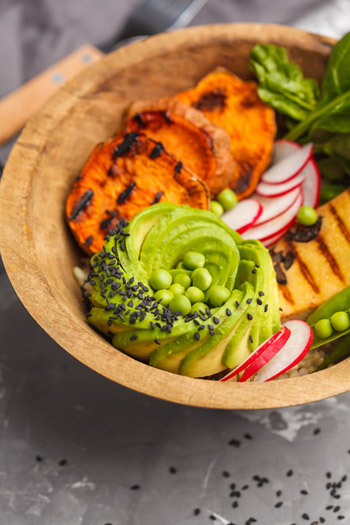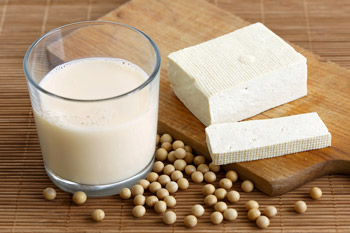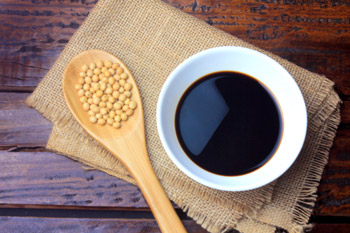Americans are more health-focused than ever, studies show
The secret is out that Americans are consciously eating healthier and incorporating more plant-based foods into their diets. According to a Nielsen survey, 39% of Americans are trying to eat more plant-based foods and the number of vegans in the US is slowly growing.
Whether the desire is to avoid over-processed foods, manage weight or promote muscle growth, almost half of Americans agree that plant-based proteins are better for you than animal-based proteins, based on Mintel research.
More and more, Americans are avoiding foods with GMOs and artificial ingredients that are high in saturated fat. Plant-based products that are high in protein are serving a preference over strict vegetarianism, and are making their way onto grocery store shelves, and now, fast-casual restaurants. Many individuals believe that meat alternatives like Beyond Meat and Impossible Foods meat are healthier than the real thing.
Healthier options are now on the front burner

Dunkin Donuts is adding healthier breakfast options to their menu with an egg white bowl with spinach and roasted potatoes, and a sausage scramble bowl to offer more protein-rich foods for their customers.
Burger King recently began testing the Impossible Whopper, a plant-based meat alternative made with textured wheat and potato protein by Impossible Foods, at several locations throughout the US. In April of this year, Del Taco became the first national Mexican fast-food chain to offer plant-based meat across its 580 locations and Taco Bell is set to offer a full vegan and vegetarian menu.
We have become a nation of label readers and answer seekers. For those on specialized diets, it’s important to ask questions about how food is prepared and with what ingredients before ordering it. Americans want healthy meal options that taste good, and restaurants need to become more accommodating to these preferences to stay ahead of this shift.
One patron at fine-dining establishment, Lazy Betty, remarked in a recent Yelp review, “unlike some other restaurants [that] are too arrogant to offer a vegetarian menu, Lazy Betty has one fit for vegetarian patrons.” This is an indicator that restaurants that build a vegetarian menu for their health-conscious customers are generally seen as more welcoming and friendlier than those that don’t.
The growth of plant-based food options in restaurants— from fast-casual to fine dining— is not a just a trend, it is a movement.
What is a plant-based meat alternative or protein?

Not to be confused with “fake food,” plant-based food alternatives include soy, vegetable, or grain based food items that can be used in place of meat in culinary dishes. Think about using mushrooms, or brown rice and beans for meat patties and jackfruit in place of BBQ chicken.
Swapping meat for these items reduces saturated fat and increases the fiber and vitamin content of dishes, which studies have found reduces the risk for diabetes, cancer, heart disease and several related health issues. Also, plants need fewer environmental resources to be sustained, therefore making vegetable proteins perfect for animal and environment lovers.
The plant-based meat that makes up the popular Impossible Burger uses coconut fat (a healthy fat), mixed with potato protein and textured wheat protein – which makes it unsuitable for those with a gluten sensitivity. Beyond Meat uses pea protein isolate, canola oil, potato starch among other plant-based ingredients to create its meaty texture.
What are the differences between diet choices?
Research has also revealed that one-third of quick-service restaurants are adding at least one dish that is labeled vegetarian or vegan, while other restaurants are creating new menus that appeal to different diet types. There is also a rising number of individuals who identify as flexitarian and don’t fit any vegetarian category. They simply reduce the amount of meat they consume, only going meatless on certain days of the week, giving rise to the #meatlessmonday.
What is the difference between vegan and vegetarian diets? Vegans follow a clear-cut, simple guideline to eat NOTHING from an animal. That means no meat, poultry, fish, dairy, eggs, lard, gelatin and food with ingredients sourced from animals. They do not purchase products made by animals (like leather) or products tested on animals. However, vegetarians live on a diet of grains, legumes, nuts, seeds, vegetables, fungi, fruits, algae, yeast, dairy, honey and eggs.
There are different types of vegetarian diets:
- Lacto-ovo: These individuals avoid meat, poultry and seafood, but they eat dairy products and eggs.
- Lacto: These vegetarians avoid eggs, meat, poultry and seafood but will consume dairy products.
- Ovo: Eat eggs but no meat, poultry or seafood.
- Pescatarian: These are semi-vegetarians who incorporate fish and seafood in their diet, but no poultry or meat.
So, what’s the deal with soy and vegetarianism?

Soy is a legume or “bean curd” product that is generally a vegetarian –and vegan – approved source of protein and is often used as a substitute for meat. When most think of soy they think of tofu, but there are different kinds of soy products that are separated into fermented and unfermented types. Unfermented soy is a processed soybean that carries a reputation for being a “health food,” as it is high in protein and contains essential amino acids that the body needs. However, there is heavy debate over whether unfermented soy is good for the body.
Unfermented Foods:
- Textured Vegetable Protein: Also known as soy meat, is a defatted soy flour product that has a crumbly texture and is often used as a replacement for ground beef.
- Soy Milk: Soybeans that are soaked, ground and added to water to create a milky substance. This is often used as a substitute for cow’s milk with patrons who are vegan or lactose intolerant.
- Tofu: Made from soybeans, water and a curdling agent like lemon juice or vinegar and processed into soft, white blocks.
- Edamame: Immature green soybeans in a pod that are cooked and eaten as an appetizer or used in salads after being removed from the pod.
Soy Recipes For Inspiration:
16 tofu recipes to get you going
40+ TVP recipes

While some health experts say that unfermented soy is not a health food, fermented soy has been proven to be healthy. It’s a form of soy that has gone through a long, fermentation process that makes it beneficial to the body. The friendly bacteria found in fermented soy helps absorb nutrients, nourishes the gut and digestive tract, as well as give the immune system a boost.
Fermented Foods:
- Tempeh: A fermented soybean cake with a firm texture and nutty, mushroom-like flavor.
- Soy sauce: A liquid condiment made from fermented soybean paste, grain and brine.
- Miso: A fermented soybean paste with a buttery, salty texture commonly used in miso soup.
- Natto: Fermented soybeans that become sticky and gooey with a strong taste. Typically used in Japanese cuisine, natto is high in vitamin K2 which supports bone and cardiovascular health.
Fermented soy recipes to consider:
21 vegan tempeh recipes
Simple natto recipe
Meatless options don’t stop with tofu
Seitan (pronounced s?-?tan) is another hearty meat alternative that is used widely in vegan cooking. It is a processed wheat gluten product that holds a chewy texture like meat. Seitan is made by removing the starch from wheat dough, leaving only the gluten to be cooked before consuming. This is not for patrons with any gluten intolerance, but there are gluten-free seiten options available.
Different types of firm vegetables like mushrooms, eggplant and cauliflower make for delicious replacements for items like hamburgers and steaks. Roasted cauliflower steaks are an emerging novelty cuisine item. Portobello mushroom burgers, when done right, can be an instant hit at your restaurant.
Tips for creating a vegan and vegetarian friendly menu
Steamed vegetable plates and regular salads as the only choices for vegetarian and vegan patrons are a thing of the past. With more and more all vegan restaurants sprouting up, fast-food to fine-dining establishments should consider adding delicious, nutritious, meat and cruelty-free meals to their menu to stay ahead of the curve.
- Choose one mock meat type to duplicate a few items on your menu. Make sure to choose the right type which is best suited for your cuisine style. For example, Italian restaurants may want to try mock “meatballs” and therefore need something that can substitute for ground beef.
- Choose non-dairy cheeses and milk that best suit the items on your menu. There are different types of non-dairy cheeses including mozzarella, parmesan and plain cheddar. Likewise, there are different types of non-dairy milks including soy, almond, and milk made with pea protein. Giving customers different non-dairy milk options at coffee shops, for instance, is a way to get a leg up on the competition.
- Make sure that any vegan/vegetarian items on your menu are not cooked on the same surfaces where meat is cooked. These items should have their own designated sections on the grill or in a separate fryer when they are prepared.
- Make the vegetarian and vegan options on your menu easy to locate, either by putting them all in one section or using small icons that annotate the different diet types with a clear explanation of each at the bottom.
- Train your staff on the ingredients used in all vegetarian or vegan-friendly dishes so they can clearly communicate to patrons with different diet preferences.
While the demand for meat is not diminishing anytime soon, creating tasty vegetarian and vegan items eliminates the veto vote among customers who follow different diet types or have dietary restrictions.
Did you enjoy this article?
Subscribe to stay up to date on industry news and receive exclusive sales and promotions.


